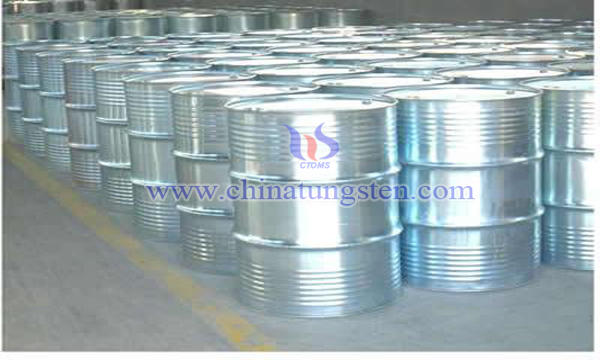Synthesis Method of Levulinate by The Catalyzation of Phosphotungstic Acid
- Details
- Category: Tungsten Information
- Published on Monday, 15 July 2019 01:44
Biomass is a renewable resource with abundant reserves, wide distribution, low price and carbon fixation function. It has the potential to replace fossil resources to produce hydrocarbon fuels and chemical products. In recent years, studies have found that biomass such as lignocellulose is mainly composed of cellulose, hemicellulose and lignin. After pretreatment, carbohydrate raw materials such as cellulose and glucose can be obtained, which can be used to produce high value-added chemicals and organisms’ oil.
Levulinate is an important class of chemical intermediates and new green energy compounds that are widely used in foods, rubber, pharmaceuticals, coatings, and pesticides as fragrances, flavoring agents, plasticizers, gasoline additives, and bio-liquid fuels. And transportation and other industries, with good reaction characteristics and broad industrial application value. At present, industrial levulinates are mostly obtained by organic synthesis of chemical raw materials, but the expensive raw material cost limits their large-scale application. The use of biomass rich in renewable cellulose or hexose carbohydrates as a raw material to obtain levulinate by direct alcoholysis is beneficial to reduce the production cost of levulinate.

The catalysts currently used for the alcoholysis of biomass carbohydrates to prepare levulinate esters are mainly (inorganic or organic) liquid acids, solid acids and ionic liquids. The shortcomings of the ionic liquid preparation process and high synthesis cost limit its application in industry; although the liquid acid is low in price and high in reactivity, it also has many side reactions and severe corrosion to equipment. It has been found that phosphotungstic acid has good catalytic activity and is an efficient method for catalyzing the alcoholysis of biomass carbohydrates to synthesize levulinate. The synthesis includes:
2 g of glucose, 15 g of methanol (liquid-solid ratio 7.5:1 g/g) and 0.4 mmol of aluminum phosphotungstate were added to the polytetrafluorotube, and a stir bar was added thereto, and argon gas was introduced thereto, and then placed in a microwave reaction chamber, and magnetic force was used. The stirrer was pre-stirred for 1 min to mix the reactants uniformly; the microwave power was set to 600 W, and the temperature was raised to 160 ° C in 2 min. The temperature was maintained at 500 W microwave power for 30 min, and the reaction was carried out under constant stirring; after the reaction was completed, the reaction mixture was taken out by rapidly cooling to room temperature using an ice water bath. The reaction mixture was taken, and the yield of methyl levulinate was calculated by gas chromatography to be 64 mol%.
The use of microwave-assisted phosphotungstic acid or its salt to catalyze the conversion of biomass carbohydrates to prepare levulinate ester has a simple process, mild reaction conditions, short reaction time, reduced energy consumption, high yield of levulinate, and simple catalyst preparation. It is widely applicable to the reaction raw materials, can be reused, and has no significant decrease in catalytic activity.
- Tungsten Manufacturer & Supplier, Chinatungsten Online: www.chinatungsten.com
- Tungsten News & Prices of China Tungsten Industry Association: www.ctia.com.cn
- Molybdenum News & Price: news.molybdenum.com.cn
- Tel.: 86 592 5129696; Fax: 86 592 5129797; Email: sales@chinatungsten.com



 sales@chinatungsten.com
sales@chinatungsten.com